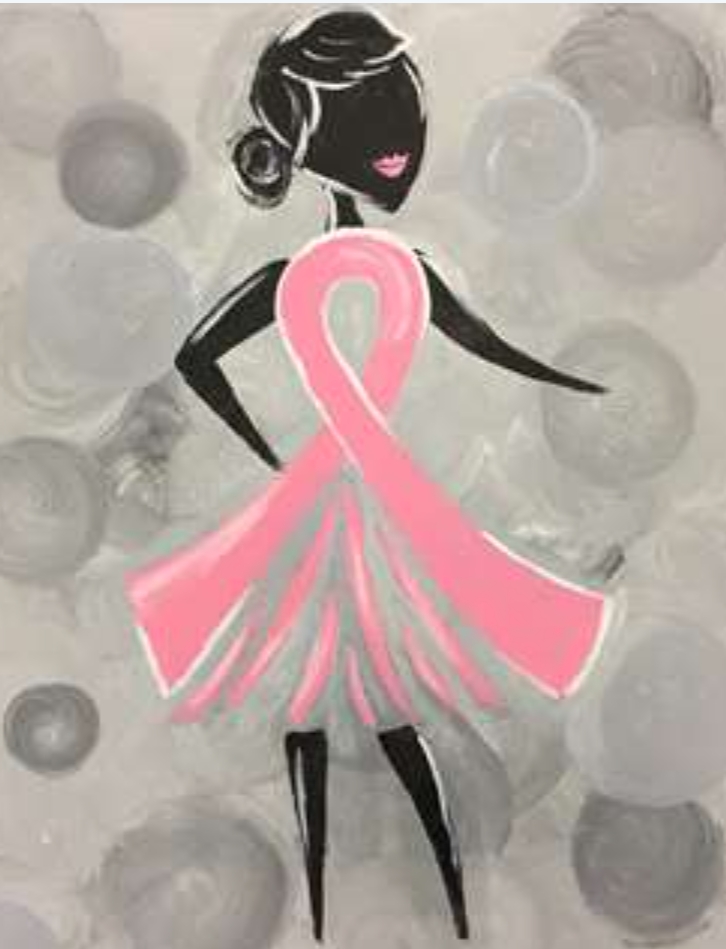
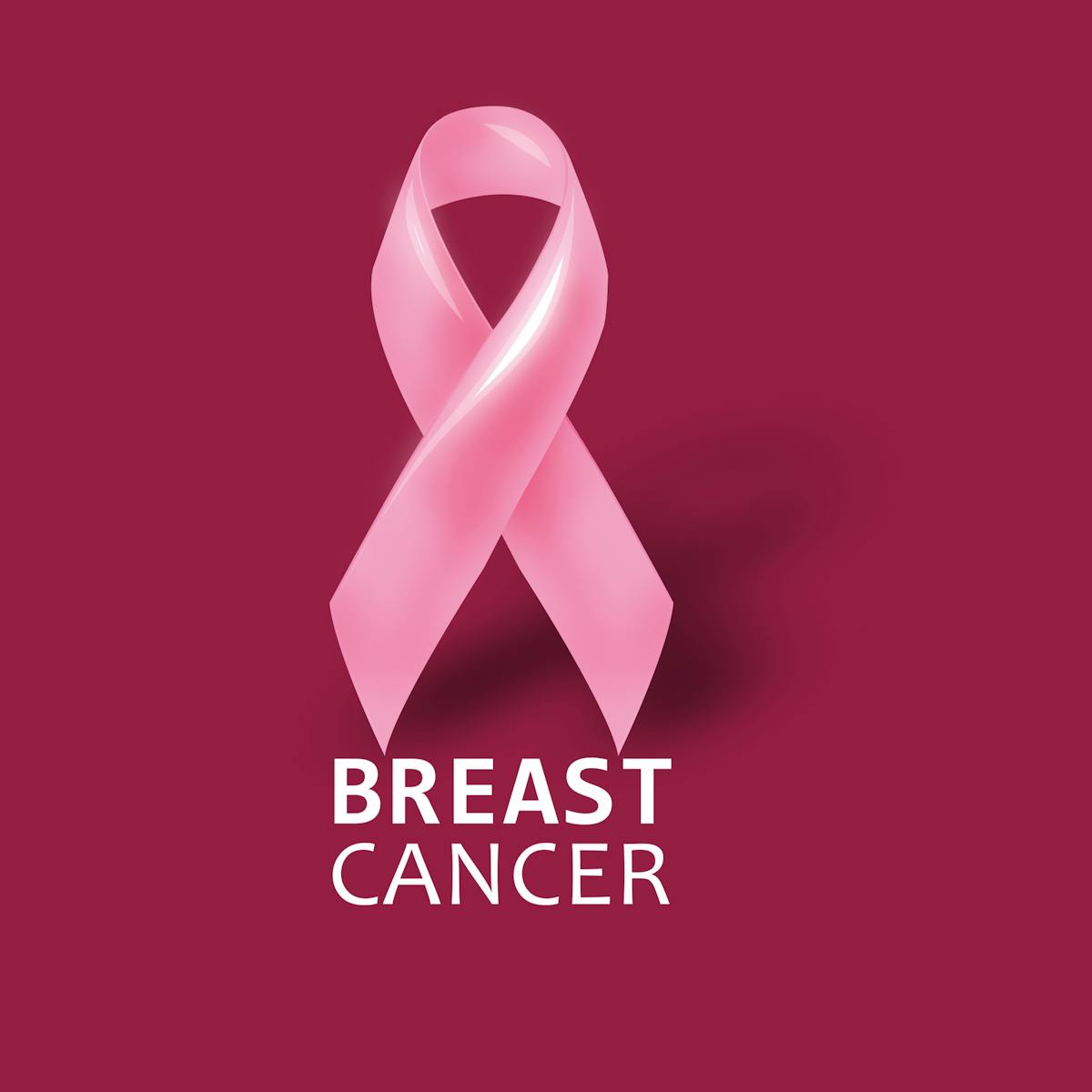
Breast cancer, which typically originates in the lining of the milk ducts, can spread to other organs, and is the most aggressive cancer affecting the global female population. The condition presents more among female populations in developed nations due to their extended life spans. Initially, women afflicted with breast cancer may develop breast lumps. Most breast lumps are nonthreatening. Breast cancer is the most common cancer in women. It is second to lung cancer as the leading cause of death for women. Like all forms of cancer, breast cancer is made of unusual cells that grow out of control. Those cells may also travel to places in your body where they aren’t usually found. When that happens, the cancer is called metastatic.
The symptoms of breast cancer include:
1)A lump or thickened area in or near your breast or underarm that lasts through your period
2)A mass or lump, even if it feels as small as a pea
3)A change in your breast’s size, shape, or curve
4)Nipple discharge that can be bloody or clear
5)Changes in the skin of your breast or your nipple. It could be dimpled, puckered, scaly,
or inflamed.
6)Red skin on your breast or nipple
7)Changes in the shape or position of your nipple
8)An area that’s different from any other area on either breast
9)A hard, marble-sized spot under your skin
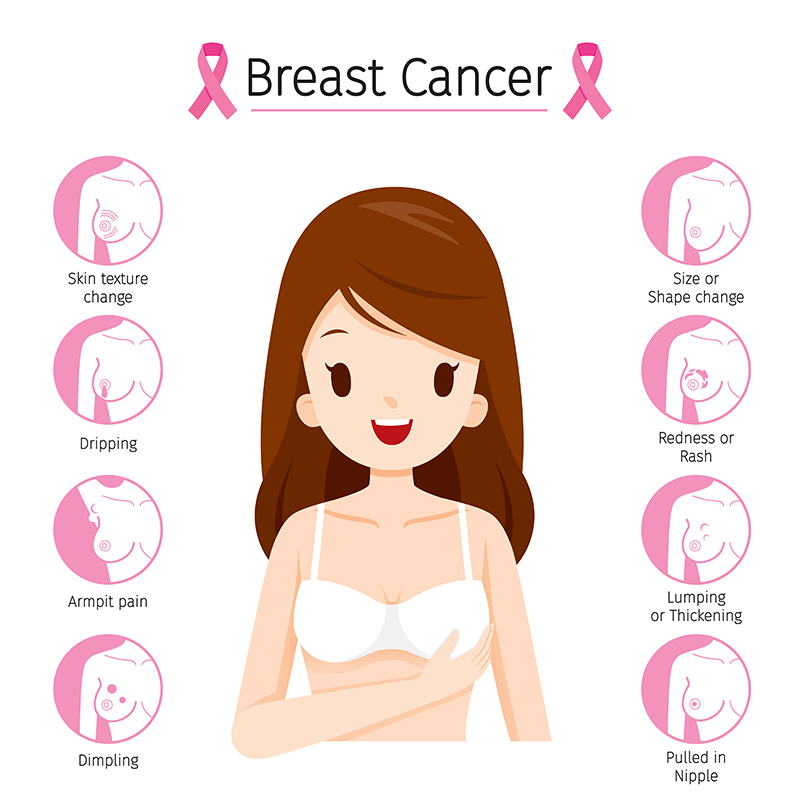


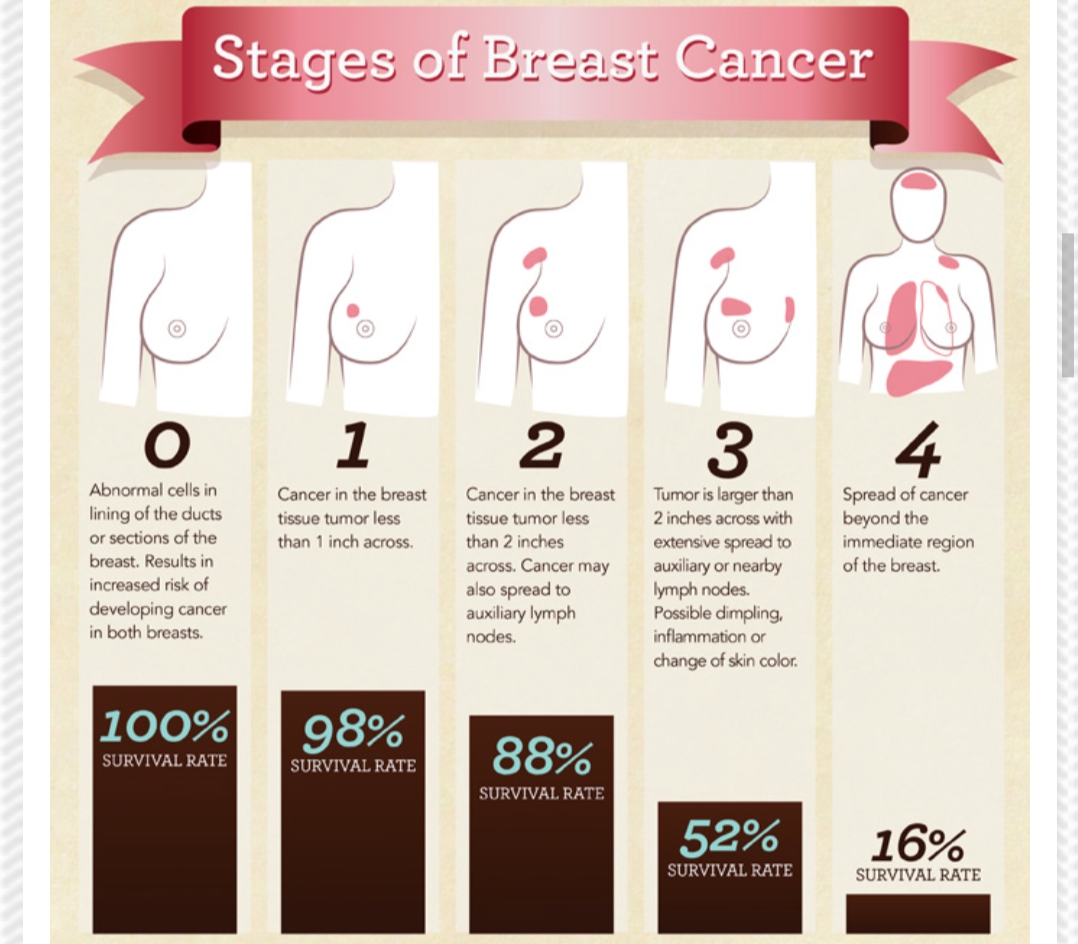
Your doctor determines your breast cancer treatment options based on your type of breast cancer, its stage and grade, size, and whether
the cancer cells are sensitive to hormones. Your doctor also considers your overall health and your own preferences.
Breast cancer surgery:
Operations used to treat breast cancer include:
Removing the breast cancer (lumpectomy): During a lumpectomy, which may be referred to as breast-conserving surgery or wide local
excision, the surgeon removes the tumor and a small margin of surrounding healthy tissue.
Removing the entire breast (mastectomy): A mastectomy is an operation to remove all of your breast tissue.
Removing several lymph nodes (axillary lymph node dissection): If cancer is found in the sentinel lymph nodes, your surgeon will
discuss with you the role of removing additional lymph nodes in your armpit.
Chemotherapy:
Chemotherapy uses drugs to destroy fast-growing cells, such as cancer cells. If your cancer has a high risk of returning or
spreading to another part of your body, your doctor may recommend chemotherapy after surgery to decrease the chance that the
cancer will recur. Chemotherapy is sometimes given before surgery in women with larger breast tumors. The goal is to shrink a
tumor to a size that makes it easier to remove with surgery.
Radiation therapy:
Radiation therapy uses high-powered beams of energy, such as X-rays and protons, to kill cancer cells. Radiation therapy is
typically done using a large machine that aims the energy beams at your body (external beam radiation). But radiation can also
be done by placing radioactive material inside your body (brachytherapy).
Hormone therapy:
Hormone therapy — perhaps more properly termed hormone-blocking therapy — is used to treat breast cancers that are sensitive to
hormones. Doctors refer to these cancers as estrogen receptor positive (ER positive) and progesterone receptor positive (PR positive)
cancers.
Treatments that can be used in hormone therapy include:
Medications that block hormones from attaching to cancer cells (selective estrogen receptor modulators)
Medications that stop the body from making estrogen after menopause (aromatase inhibitors)
Surgery or medications to stop hormone production in the ovaries.
Targeted therapy drugs:
Targeted drug treatments attack specific abnormalities within cancer cells. As an example, several targeted therapy drugs focus on a
protein that some breast cancer cells overproduce called human epidermal growth factor receptor 2 (HER2). The protein helps breast
cancer cells grow and survive. By targeting cells that make too much HER2, the drugs can damage cancer cells while sparing healthy cells.
Preventions:
These tips may help you prevent breast cancer:
Control your weight. Extra pounds and weight gain as an adult raise your odds for breast cancer after menopause.
Stay active. Exercise lowers your risk. Aim for 150 minutes of moderate or 75 minutes of heavy activity
each week (or a mix). Spread it out during the week.
Limit or skip alcohol. Experts recommend that women have no more than 1 alcoholic drink a day.
That’s 12 ounces of beer, 5 ounces of wine, or 1.5 ounces of 80-proof distilled spirits (hard liquor).
Breastfeed. Longer is better to lower your risk.
Limit hormone therapy after menopause. Ask your doctor about non-hormonal options to
treat your symptoms.
Get screened. Recommendations vary by age and risk and other factors. Some of the
most recent include:
U.S. Preventative Services Task Force:
40-49: Get a mammogram every 2 years if you and your doctor think you need it.
50-74: Get a mammogram every 2 years.
75+: Ask your doctor if you should continue getting mammograms.
American Cancer Society:
40-44: Get an annual mammogram if you and your doctor think you need it.
45-54: Get an annual mammogram.
55-74: Get a mammogram every 1 or 2 years.
75+: Get a mammogram every year so long as you’re in good health and expected to live 10 years or more.
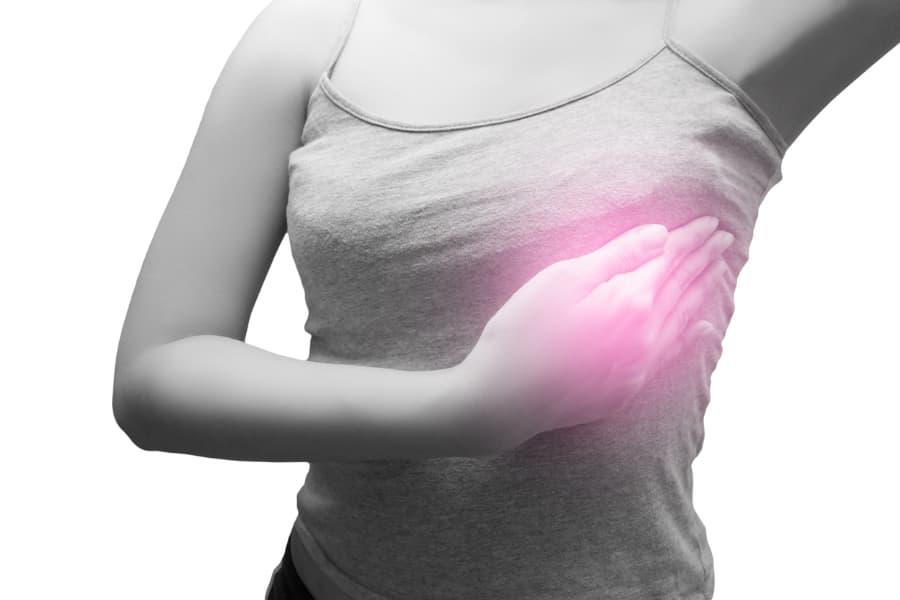
 She
Care
She
Care